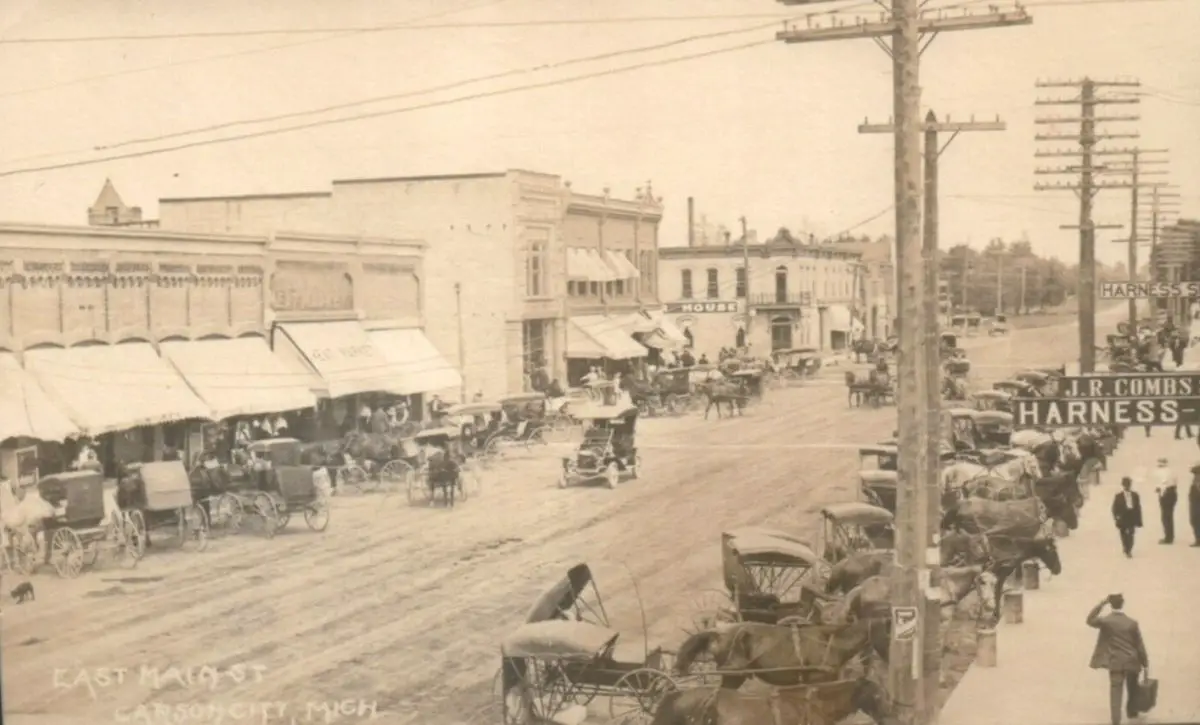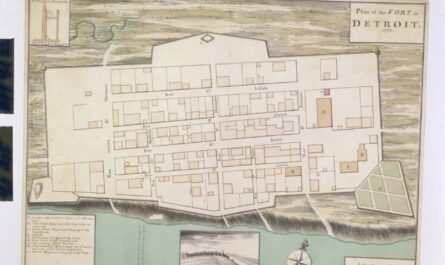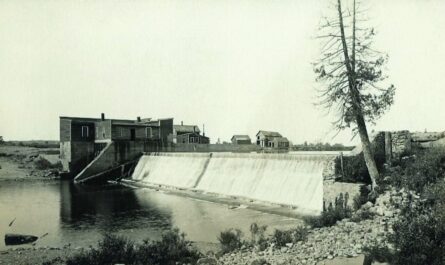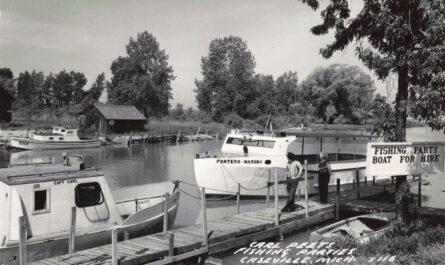Postcards are a window into the past. In the early 1900s, sending a postcard was like sharing a Facebook post. It seemed like everyone was doing it. We found some great examples of vintage postcards of Michigan small towns worth a quick peek at.
Featured Cover Image Carson City Michigan: Burton Historical Collection, Detroit Public Library
What We Will Cover About the Vintage Postcards of Michigan
When Did People Start Sending Postcards?
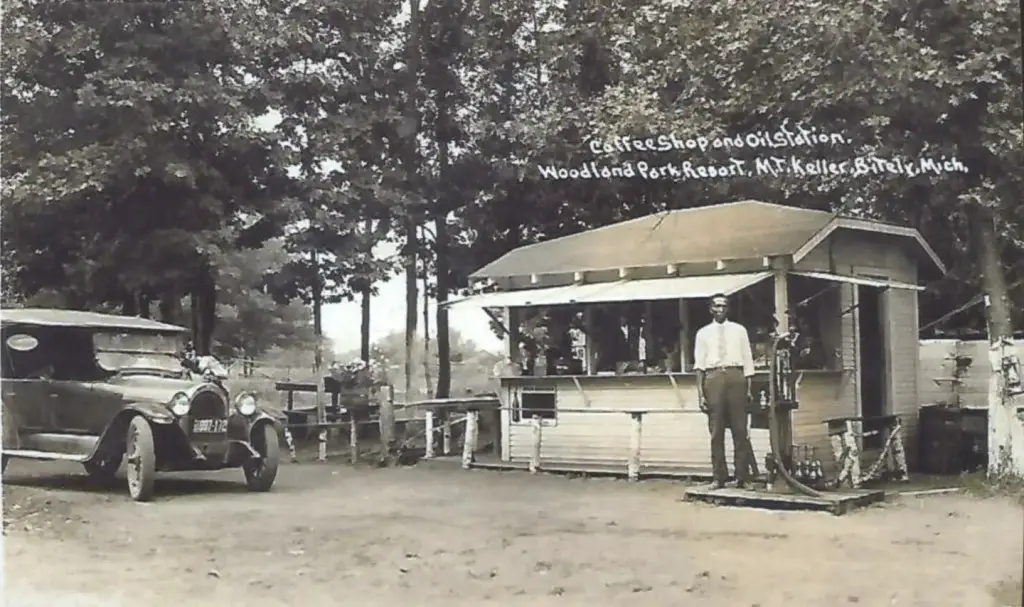
Despite the size, color, and other restrictions, postcard manufacturing exploded in the late 1800s and early 1900s. Postcards were popular because they allowed people to communicate quickly and easily.
The Postmaster-General issued Order No. 539 in 1907, allowing messages on the left half of the address side of government-produced postcards. The Divided Back Period, which lasted from 1907 to 1915, was ushered in by these alterations to postcardbacks. Due to the widespread popularity of postcards during this time, the Divided Back Period is also known as the “Golden Age of Postcards.”
Today, deltiology (the study of postcards) is a popular pastime, and many people collect postcards of their favorite states or places they have visited or grown up in. This collection was found on the website SkurfanPostcards on eBay. Note: Most of the postcards on this site are copies of postcards, not originals.
Here are some images of the past in the Michigan Thumb region. It’s incredible how much has changed, but you can still see what remains 100 years later.
Birch Run Postcard – From Small Town To Huge Outlet Malls
Birch Run was established in 1852 as a Pere Marquette Railroad station by John Moore, the first Postmaster. The settlement was named after a brook that passes through a densely forested area. The town was renamed Deer Lick in 1863 and stayed that way until 1868 when it was renamed Birch Run again.
What is Unique About Birch Run?
Birch Run, Michigan, has a unique and somewhat surprising claim to fame: it is home to one of the largest outlet malls in the Midwest, the Birch Run Premium Outlets. This sprawling shopping center, which attracts visitors from all over the region, starkly contrasts Birch Run’s humble beginnings as a small railroad station established in 1852. Such a significant retail destination in a relatively small village is entirely unexpected. It has made Birch Run a notable spot for shopping enthusiasts and those interested in how a small town can host a significant commercial hub.
Brown City – Birthplace of the Motor Home
Brown City began as a rail stop on the Port Huron and Northwestern Railway, which ultimately became part of the Pere Marquette Railroad in 1879. The location immediately established itself as a reliable shipping hub for timber and grains. The second Great Michigan Thumb fire in 1881 destroyed much of the village. Drought and mounds of trash left by lumber businesses, including sawdust, abandoned dry timber, fallen trees, and dried pulp, were thought to have spread the fire. Brown City began as a town in 1887 and became a city in 1907.
What is Unique About Brown City?
Brown City is recognized as the “Birthplace of the Motor Home.” Ray Frank, the proprietor of a small trailer firm, developed and manufactured a small bespoke “house vehicle” that could be driven in 1958. While Frank meant for the car to be used and enjoyed by his family, he changed his mind. It was dubbed his “mobile home” by him and his family. It was a hit at campgrounds, and Frank soon began building motor houses on Dodge truck chassis. Frank had manufactured 131 units by 1961.
Capac – Find A Miniature City In This Small Town
The Village of Capac was incorporated in 1873. In 1881, a disastrous fire destroyed most of the buildings in the center of town, but it was rebuilt and thriving by the turn of the century.
What is Unique About Capac Michigan?
Preston Tucker, the designer of the 1948 Tucker Sedan, was born near Capac in 1903. He lived in Detroit and founded Preston Tucker Corporation. In 1949, he went on trial for fraud. The movie “Tucker: A Man and His Dream” is about him and his car.
Capac is also known as the home of Kempf Model City, an attraction that, during the turn of the 20th Century, was a top money-maker, touring with carnivals and circuses all over the United States. It featured miniature buildings with lights inside them.
Caro – Was The Center of Power For Michigan’s Thumb
Caro, Michigan, was founded in 1847 as a logging camp on the Cass River. One of the most exciting aspects of Caro’s history revolves around its connection to the local Indigenous people and the land’s natural resources. The area, known as “Indian Fields,” was highly productive in agriculture, particularly for crops like corn, potatoes, beans, squash, and pumpkins. These fields were incredibly fertile due to their location near the Oxbow on the Cass River. The Indigenous people in this region were adept at harnessing the land’s natural resources for food, transportation, and energy??.
Caro’s rich agricultural heritage continues to be a defining characteristic of the city, evident in its reliance on farming and hosting the Tuscola County Fair, one of the oldest and largest county fairs in Michigan. This event celebrates local agriculture and community, featuring amusement rides, entertainment shows, craft exhibitions, and more??.
What is Unique About Caro Michigan?
The Caro Michigan Dam and the surrounding landscape is what one might call “Caro’s Energy Alley”—or “Caro’s Heart”—it is the place in the past and today where raw energy and power have been received and generated, refined, stored, and distributed.
In 1898, Caro Electric Light Works was incorporated under the title of Caro Light & Power Company. There has been a power plant at this site since then.
November 1, 1922, Consumer’s Power Company acquired the Caro Light & Power Company along with the Caro Michigan dam. November 1, 1935, Detroit Edison took ownership and maintained an office in Caro.
In the 1960s, the Caro Michigan dam reservoir, or Caro Lake, was a popular site for boating, fishing, and even water skiing. However, due to budget constraints and changing ownership of the dam itself and its nearby land holdings over several decades, the dam has fallen into languishing and disrepair.
Cass City – Home of the Thumbs First “Skyscraper”
“In 1864, on the site now occupied by the Cass City block, a small log schoolhouse was built, one of the first in the town of Elkland. It had witnessed the toils and trials of the early settlers, the gradual disappearance of the forest, and the opening up of farms. Within its walls, the minds of many now-active businessmen and farmers had received their early training. It soon disappeared, and in its place is a thriving village.
In about 1866, Nathaniel Clark started a store in a small board shanty that now stands as the store occupied by Wilsey & Stewart. This establishment he sold to Jesse Fox shortly after, and in 1867 to Laing & Weydemeyer, who for some time continued business in the same building. This was the origin and the nucleus of the village, which was platted in 1868 by the estate of John C. Seegar and called Cass City. The same year, Jesse Fox built a hotel, and dwelling- houses, stores, and other buildings- gradually gathered around.”
What is Unique About Cass City?
Cass City, Michigan, offers a blend of historic charm and modern community amenities, making it a special place. One of the most fascinating historical aspects of Cass City is its architectural heritage, notably the New Sheridan Hotel. Built in 1895 by Michael Sheridan, this three-story building was considered a skyscraper in its day. It was constructed of iron, brick, and glass and topped with a distinctive “witches cap.” This Victorian-era structure was a joint project in thriving smaller towns across America and was a point of pride for Cass City residents.
However, over time, many of the original ornate trims, front facades, and balconies of buildings like the Sheridan Hotel have been lost or remodeled, showing the transition of time in the city’s architectural landscape??.
Coleman – Industry and Oil Fields
Since 1870, Coleman, Michigan, has been a hub of innovation and progress.
In 1871, the building of a sawmill laid the groundwork for a new community to rise. It was called Coleman, named after one of its first citizens, Mr. Thomas Coleman. In 1872, a station of the Pere Marquette Railroad opened, and the population grew exponentially. In 1887, the village of Coleman was incorporated, and in 1905 it was granted city status.
What is Unique About Coleman Michigan?
Coleman, Michigan, a small city in Midland County, is notable for its rich history and a series of remarkable events over the years. One of the most significant events in Coleman’s history was the Coleman Rail Crash in December 1903, which resulted in the tragic loss of nineteen lives. This incident is remembered as one of the worst railway disasters in Michigan’s history.
Another key moment in Coleman’s history was the discovery of an oil field in 1939, which transformed the town’s economy. This led to a surge in oil exploration and development in the region, boosting the local economy and creating jobs.
Glennie – Nature Beauty in Michigan
In Alcona County, Glennie was founded during Michigan’s lumbering boom in the 1880s. Today, the community remains a small rural town with several small lakes and nearby access to the AuSable River. The area is also popular for outdoor recreation with its proximity to the Huron National Forest and numerous winter snowmobile and summer hiking trails.
What is Unique About Glennie?
Glennie, Michigan, is a small village known for its serene natural beauty, making it a tranquil retreat from city life. It lies in northeastern Michigan’s lower peninsula, within the Huron National Forest, and offers a range of outdoor activities. Glennie is surrounded by lush forests, pristine lakes, and rivers, making it ideal for hiking, fishing, canoeing, and kayaking, especially on the nearby Au Sable River. Despite its natural grandeur, Glennie maintains a cozy small-town atmosphere and is perfect for stargazing due to its location away from city lights.?
Hesperia – A Town With a Foot In Two Counties
Hesperia is a settlement in the counties of Newaygo and Oceana. In 1866, the community was platted and documented. Some of the greatest salmon and rainbow trout fishing may be found here. Stroll along the main street, stop in to see the local stores, and walk along the riverfront promenade along the White River.
The Manistee National Forest and many interior lakes and streams surround the community, providing opportunities for hunting, hiking, snowmobiling, snowshoeing, and ice fishing in the winter.
What is Unique About Hesperia?
Hesperia, Michigan, is a unique village in Newaygo and Oceana Counties and the only village in Newaygo County. Half of the village lies in Newfield Township in Oceana County, and the other half in Denver Township in Newaygo County.
Mayville – The Heart of Michigan’s Thumb
According to the History of Tuscola and Bay Counties, Mayville wasn’t planned but appeared out of the wilderness, apparently starting as a general store. “Here, the pioneer merchant opened his doors and exposed his wares. He had just returned from the war and was doing a small business in groceries and general backwoods stock.” January 15, 1865, the first bill of goods ever sold in Mayville was sold by H. K. Crittenden to a lady, Mrs. George Cramp. March 31, 1868, William Turner and Leonard Fox platted the village, which has had steady growth from that time to the present.
On June 19, 1873, Mayville was visited by a destructive fire. An entire city block was engulfed and destroyed in only two hours, and five families were homeless. $ 30,000 worth of property (over $700,000 today) was destroyed.
What is Unique About Mayville?
If you head north on M-24, about 80 miles from Detroit, you’ll discover the quiet and charming village of Mayville. It’s slightly off the typical tourist track in the heart of Michigan’s Thumb Region. We found it a perfect spot to have lunch or get groceries before heading to the Saginaw Bay Shoreline. This picturesque rural community is 45 miles west of Lake Huron and is the proud host of the Sunflower Festival.
Port Austin – At The Tip Of Michigan’s Thumb
Port Austin was organized as a township on April 7, 1862. It is one of the oldest settled townships in the county, the European settlers coming about 1837. The land was heavily timbered with oak and beech, which furnished an excellent range for stock, but that was burned off, and the land cleared up. The township has been twice swept by fire, once in 1871 and again in 1881. The last time, one-tenth of the township was burned over by the fires of 1871 and 1881. The wind changed during the latter’s progress, driving the fire backward and westward, which saved the town of Port Austin and a large portion of the township.
What is Unique About Port Austin?
There are two towns in this township – Port Austin and Grindstone City, both on Lake Huron. The former is located at the mouth of Bird Creek on Saginaw Bay. There is a lake port here where, back in the 1800s, vessels loaded lumber from nearby sawmills for export to big cities like Detroit or Cleveland. Located at the tip of Michigan’s Thumb, Port Austin offers year-round activities for tourists and cottage owners.
Sandusky – Small Town Charm With Plenty to Do
Wildman Mills named Sandusky, which was established as a community in 1885. Mills was a lumberman and a significant landowner in the region. Sandusky, Ohio, was the inspiration for the city’s name. Mills grew up in Sandusky, Ohio, which his father named after him. The town became the county seat in 1879. Previously, it was in the village of Lexington, where it was founded. The city of Sandusky was renamed Sanilac Centre in 1887. The community was established as a city on July 24, 1905, and the name was changed to Sandusky.
What is Unique About Sandusky?
This charming Michigan small town is located just west of Port Saniliac on the shores of Lake Huron. One of the favorite and unique things you can find near Sandusky is an authentic drive-in movie theater!
Walkerville – A West Michigan Fruit Basket
It was first platted in 1883 by Fayette Walker, who owned all the land in the area. The town grew slowly until 1888 when the Mason and Oceana Railroad extended its line into town. Like most towns in Michigan at the time, the primary industry was lumbering. When the area was deforested, it turned to agriculture. Its location on the railway and proximity to shipping ports on Lake Michigan meant the town had ready access to markets in Chicago and Milwaukee. Today, the little town is surrounded by the Huron Manistee National Forest.
What is Unique About Walkerville, Michigan?
Walkerville has experienced two major fires that significantly damaged its infrastructure. Despite these setbacks, it remains a vital community known for cultivating produce like cherries, apples, and asparagus, for which West Michigan is renowned. In the summer of 2020, Walkerville hosted Camp Gan Israel of Michigan, marking the first significant Jewish presence in the village, with the camp’s residence comprising over a third of the town’s population during that time.?
FAQs About Michigan Postcards
What era do most of these vintage Michigan postcards come from?
Many of these postcards are from the early 1900s, a period known as the “Golden Age of Postcards.”
Why are these postcards significant for Michigan’s history?
They provide a visual record of Michigan’s small towns, showcasing their development and historical landmarks.
Can these vintage postcards be considered collectibles?
Absolutely, they are highly valued by collectors for their historical significance and unique portrayal of Michigan’s past.
Can vintage postcards be considered antiques?
Yes, vintage postcards can be considered antiques, especially if they are over 100 years old, which is a common benchmark for an item to be classified as an antique. The age, rarity, condition, and historical significance of the postcard contribute to its status as an antique. Collectors often seek out vintage postcards for their historical value, unique artwork, and the glimpse they offer into the past. These postcards can be valuable not only as collectibles but also as historical artifacts that capture moments, places, and cultures from bygone eras.
What makes antique postcards valuable?
Older postcards, especially those from the late 19th and early 20th centuries, are often more valuable. Rarity also plays a significant role; postcards that were produced in limited quantities or are hard to find typically have higher value.
A postcard with original, legible postmark and vintage stamps can increase its value, especially if the postmark dates back to a significant historical event or period.
Are Vintage Postcards Copyrighted?
While some vintage postcards are subject to copyright, others are not and thus fall into the public domain. This means that while the reproduction or use of copyright-protected postcards requires permission, those in the public domain can be freely used and reproduced by anyone.
Postcards Published:
Before 1923 – are in the public domain and could be used freely by anyone.
Between 1923 and 1978 – without a public copyright notice, are also in the public domain.
Source: ThirdShiftVintage.com
Related Reading Vintage Postcards of Michigan Small Towns
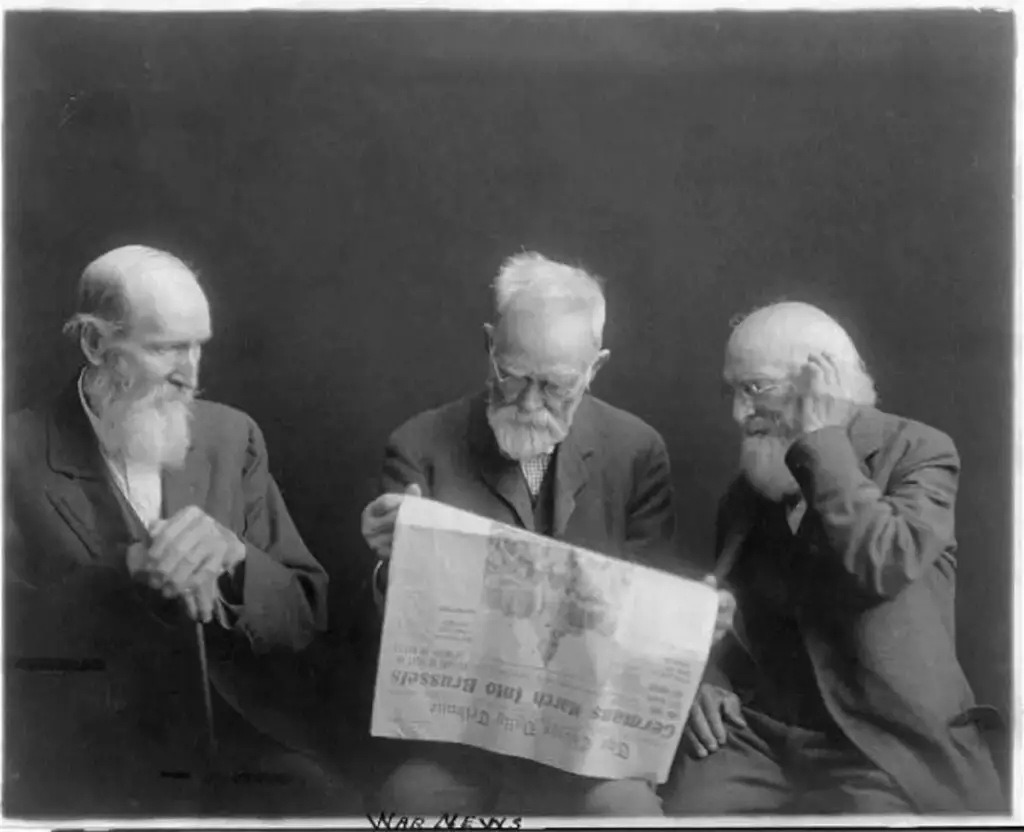
8 Noted Truck Stops in Michigan Worth Keeping in Mind On Your Next Roadtrip
Spring 2022 is Bringing Avian Flu – Let’s Keep Our Michigan Bird Feeders Out Of Sight? Again!
Discover more from Thumbwind
Subscribe to get the latest posts sent to your email.

